Keynote Speakers
Speakers
![]() Professor Åse Gornitzka
Professor Åse Gornitzka
![]() Professor Jonathan Grant
Professor Jonathan Grant
![]() Professor Rosemary Deem
Professor Rosemary Deem
Professor Åse Gornitzka
 |
Professor Åse Gornitzka Arena Centre for European Studies, University of Oslo |
Keynote Address |
Post-keynote Address Interview |
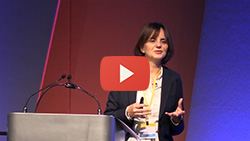 |
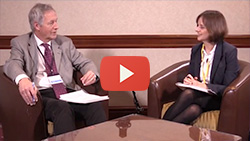 |
The European University’s ‘living autonomy’ and the shifting dynamics of its inner life
European universities are positioned in rapidly changing national, regional and global contexts, which are strongly affected by knowledge economy visions. These visions incorporate a core role for universities as prime knowledge institutions. It implies walking the tightrope between several, purportedly conflicting, concerns and interests. It also implies managing universities’ performative, professional and moral reputation among multiple audiences (Christensen and Gornitzka 2016).
Universities are expected to maintain if not strengthen their academic excellence, but also to produce knowledge of relevance to society at large; to deliver graduates that are able to learn and (further) develop their competences and skills in professional practices; and to strengthen their global competitiveness. This is a tall order for universities, navigating between multiple visions of what they should be and what they should accomplish (Maassen and Olsen 2007).
Central to the policy debate has been the notion of ‘institutional autonomy’ as a key element in the framework conditions for European universities for handling internal and external expectations more effectively. The general call for ‘more autonomy’ has been a mantra among policy makers and stakeholders, a call that reverberates a central discussion all over Europe about university autonomy as part of governance reforms of higher education and as part of general public sector reforms (Christensen, Gornitzka and Maassen 2014). Core assumptions underlying these university reforms were first that autonomous universities will more effectively accommodate the needs of various stakeholders in the ‘knowledge marketplace’; and second that strategic organisational actorhood of more autonomous universities will lead to ‘healthy’ systemic integration and diversity.
Research on how these reforms have impacted university autonomy has mainly been focused on changes in the formal governance relationship between state authorities and universities (e.g. Enders et al. 2013). However, studies on changes in the formal governance relationship cannot explain important aspects of the nature of intra-university change. In order to understand intra-university change dynamics we have to examine the ‘living autonomy’ of universities, i.e. the ways in which the changes in the formal governance relationship between state authorities and universities are perceived, interpreted, translated, operationalised and used inside each university (Fumasoli, Gornitzka and Maassen 2014).
Drawing on a recent study of European ‘flagship universities’ this presentation takes the following question as its point of departure:
How are changes in institutional autonomy interpreted and used at different levels within universities, and what are the implications for how universities organise their ‘inner life’ as well as for how academic practices are controlled?
Professor Jonathan Grant
 |
Professor Jonathan Grant Director, The Policy Institute, King's College London |
Keynote Address |
Post-keynote Address Interview |
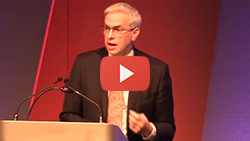 |
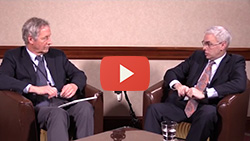 |
Sausages, evidence and policy making: The role for universities
“Law and sausages”, as Otto von Bismarck famously did not say, “are two things you do not want to see being made”. Much the same might be said of policymaking. Like sausage- and law-making, it is messy, iterative, and little understood. And for those of us who champion the use of evidence in policymaking, this messiness is a real challenge.
Indeed, as we see it, part of the appeal of evidence is that it ‘tidies up’ some of the messiness that pervades the policymaking process. To apply the words of David Sackett, one of the pioneers of evidence-based medicine, to a slightly different context: good policymaking should be about “the conscientious, explicit and judicious use of current best evidence”.
The growing acknowledgment of – and advocacy for – the use of evidence in policymaking is a good thing. But it is balanced by a certain cynicism. During the EU Referendum campaign, Michael Gove famously said “People in this country have had enough of experts” - perhaps reflecting a preference for ideology over the inconvenience of evidence. This fatalistic view that ‘nothing works’ is dangerous and needs to be challenged. Those of us who champion the use of evidence in policymaking need to up our game.
We need to understand and acknowledge that ‘evidence’ is just one ingredient in the policymaking process: habit, resources, values, ‘marketability’ and politics all, for example, legitimately impinge on that way policy is made. From this perspective, one role that evidence can and does play is to help reduce the uncertainty – the messiness – inherent to policy and decision-making. But it is not the only role that evidence can play.
Translating thoughtful research (or evidence) into actionable policy is a tough challenge that requires innovative and creative thinking. Research findings compete with other diverse inputs for visibility on the policymaker’s radar and different agendas, timeframes and communication styles also create obstacles. A systematic review of the use of evidence by policymakers suggests continuing needs for academic research that is timely, relevant and of good quality. We need to explore new ways of engaging with policymakers: developing communities of practice, employing the concept of ‘nudging’ from behavioural economics, and, most importantly, creating a ‘marketplace’ for evidence that includes both supply and demand-side incentives.
The introduction impact case studies as part of the 2014 Research Excellence Framework (REF) has begun to put some of those incentives in place. It is interesting to note that the word “policy” was mentioned at least once in 3,206 case studies and the two largest impact topics identified through text mining techniques were ‘Informing government policy’ (n=1233, 20% of case studies) and ‘Parliamentary scrutiny’ (n=983, 17% of case studies).
But as researchers and those interested in the application of research to societal benefit we must ensure that evidence-based policy making is itself open to being researched, to make sure we understand the effectiveness of knowledge exchange, translation and mobilisation activities – all areas that receive significant amounts of public money in their right but with limited evidence and understanding about what actually works.
Professor Rosemary Deem
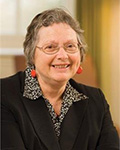 |
Professor Rosemary Deem, OBE Vice Principal (Education), Royal Holloway University of London |
Keynote Address |
|
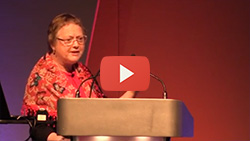 |
International Contexts and Collaboration: The Implications and Impact of Brexit

the global higher education research community…






